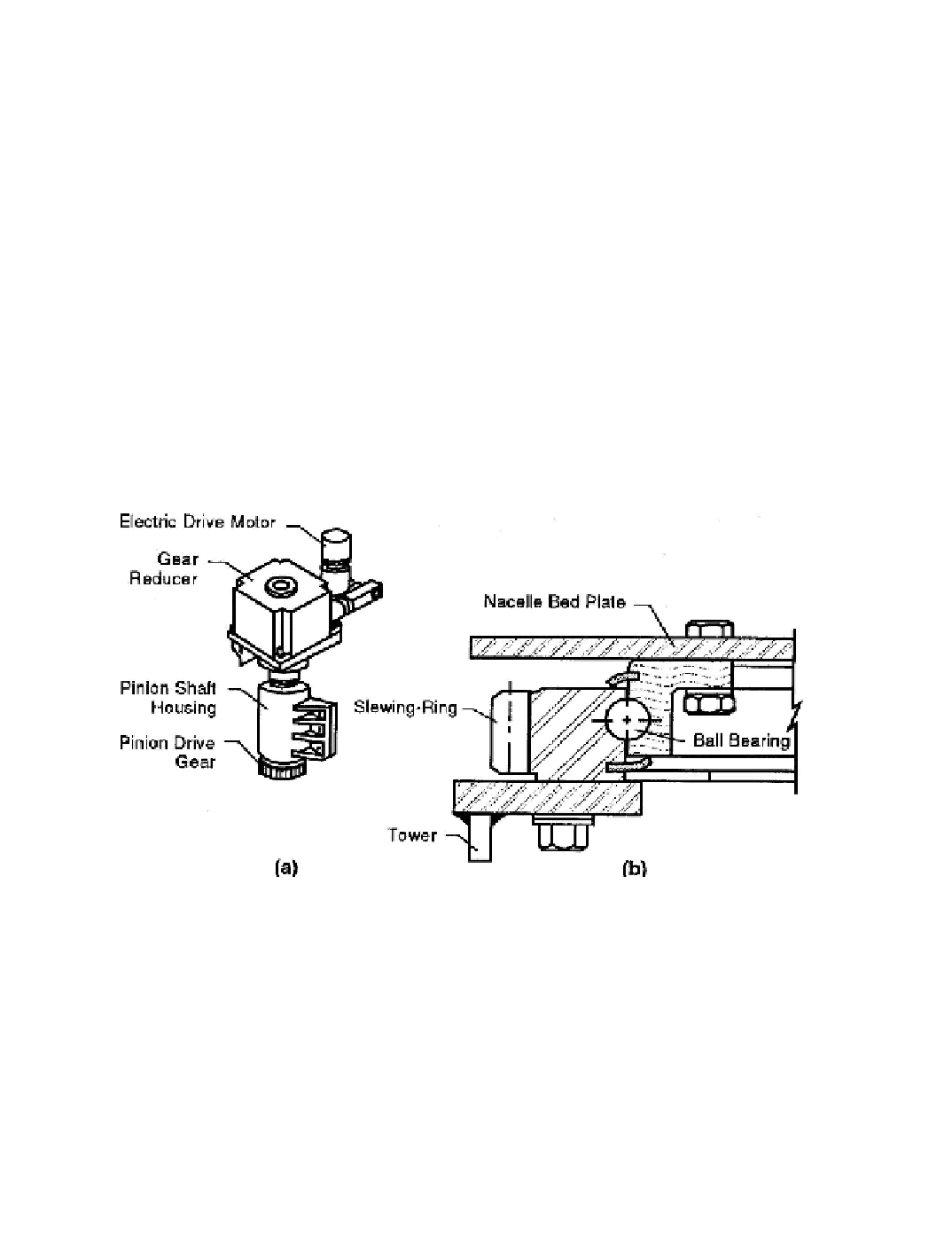Environmental Engineering Reference
In-Depth Information
Yaw drive system
All HAWTs are designed to track the wind by orienting the nacelle in
azimuth
(compass
direction) so that the rotor plane is normal to the wind. Most HAWTs with upwind rotors
use an active yaw system for wind alignment. Almost all downwind machines use
weather
vaning
or
passive yaw
for tracking the wind. Many small wind turbine rotors are located
upwind of the tower and track the wind through the action of wind forces acting on a tail
vane. Passive yaw systems reduce cost, weight, and maintenance by eliminating yaw drive
components. However, if not properly designed, passive yaw can result in higher fatigue
loads caused by operations at relatively large
yaw errors
The majority of yaw drive systems for medium- and large-scale upwind machines are
electromechanical, with the remainder being predominantly hydraulic. Figure 4-3(a) il-
lustrates a common yaw drive system in which a motor turns a small
pinion gear
through a
worm-gear reducer
. These components are mounted on the movable bedplate of the nacelle.
The pinion gear engages a large, stationary
slewing-ring
or
bull gear
mounted rigidly on the
tower, as illustrated in Figure 4-3(b). The tower structure provides the stiff vertical support
required for the yaw bearing. As turbine sizes have increased, so have tower heights and
diameters, yielding larger diameters and costs of yaw bearings. These very large diameters
are pushing the capability of machining yaw bearings, putting pressure on the manufacturing
supply chain for large-scale wind turbines.
Figure 4-3. Schematic diagram of a motor-driven yaw system.
(a) Electric or hydraulic
motor drive and pinion gear (b) Bull gear and yaw bearing assembly.
Upwind machines have experienced fatigue-related problems with yaw slew rings and
the pinion drives. Most of these result from unbalanced rotors and underestimating wind
loads from turbulence and wind shear, both horizontal and vertical.
Yaw damping
, either by
the use of sliding
yaw
brakes
or flexible drive mechanisms, has proven beneficial in reduc-
ing yaw slewing rates and cyclic loads in all sizes of HAWTs. The problems that have been
encountered most frequently with downwind machines are associated with
hunting
, which
causes premature wear of yaw drives and bearings. Hunting refers to the tendency of some

Search WWH ::

Custom Search